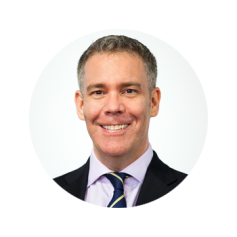The opening quarter of 2017 was a very good one overall for the pan-European funds market. Thomson Reuters Lipper data revealed nearly €170bn (£148bn) of estimated net sales for the period. This was 70 per cent of the total net sales for the whole of 2016, and it suggests that in the absence of any market catastrophe the industry could be on target for a record year of sales.
The first quarter of 2017 also revealed that investors’ affection for passive investments has remained strong, with estimates showing that passive funds accounted for a fifth of all sales. Indeed, more recently in April, six of the 10 best-selling funds were passive vehicles.
The popularity of passive investments can also be seen in the share registries of large-cap companies around the globe. Looking at the most recent fund shareholders report for the FTSE 100’s largest constituent, HSBC, only four of the 20 top fund holders of the stock were traditional active fund managers. Trackers/exchange-traded funds (ETFs) took up 13 positions and large pension funds took up three.
A similar picture was revealed for the US market. For the S&P 500’s largest stock, Apple, tracker funds/ETFs constituted 13 of the 20 top shareholders, with five individual Vanguard trackers among those.
In Europe, the FTSE Europe ex UK’s largest stock, Nestlé, also has shareholder representation from passive vehicles, but less so than the markets above. Twelve of the 20 largest holders are either passive funds, ETFs or large pension funds.
It takes a professional stock analyst to say whether Apple, at a price to earnings ratio (PE) of 18, Nestlé at 30 or HSBC at 320, represents good value for money. But even for these highly liquid stocks, given the ongoing growth in passive investing, at some point there is going to be a surfeit of investors buying large-cap stocks at any price. Large-cap stocks may not be the most prudent purchases as we enter the later stages of the economic cycle.
Active funds are a solution for those who are in any way concerned about market herding, and certainly a choice that I would strongly advocate. However, even for the most die-hard passive investors there is an increasing range of solutions. Smart beta, factor and multi-factor investing has really taken hold in Europe.
At the end of 2011, there were 27 factor-based ETFs with a comparatively paltry €248m of assets under management. At the end of April 2017, there were more than 260 smart beta products containing some €1.7bn of assets.
The concept of diversifying beta exposure has been a staple of institutional investing for many years. Given the rising tide of asset flows and the increasing share into passive products, this should be something that retail passive investors become familiar with, lest like lemmings they run over the market cap-weighted cliff.
Jake Moeller is head of UK & Ireland research at Thomson Reuters Lipper






